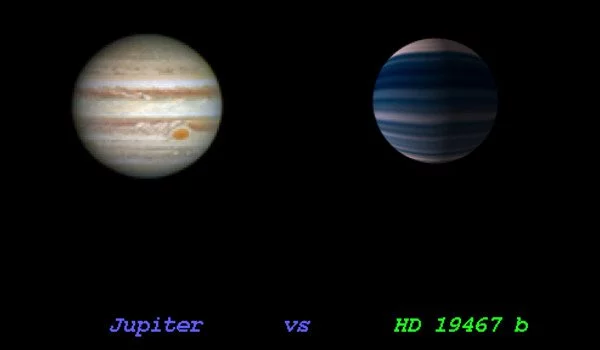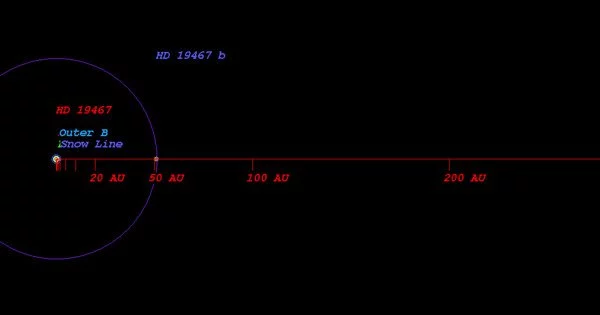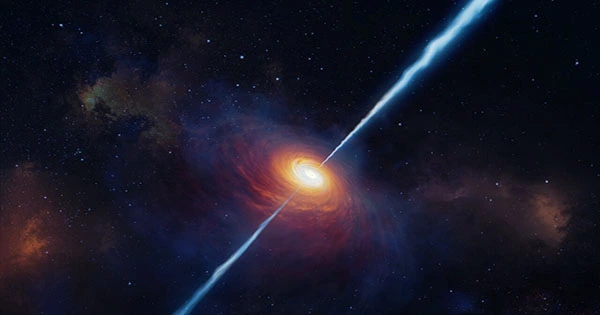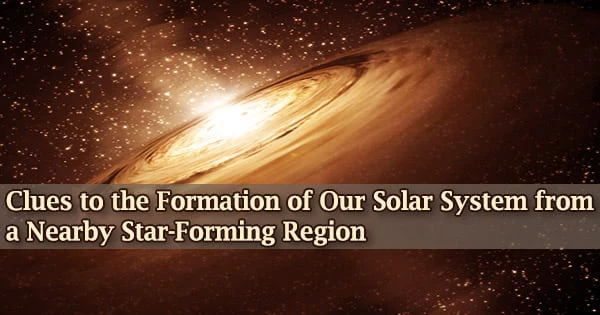HD 19467 B is a brown dwarf or super-Jupiter exoplanet orbiting the Sun-like star HD 19467 in the constellation Eridanus about 101 light-years away. It is an exoplanet that orbits the star HD 19467, which is approximately 103.5 light-years (31.7 pc) away from our Solar System. It has a surface temperature of 978.0 K (704.9 °C; 1,300.7 °F) and is classified as a T5.5. The discovery was made public in 2016.
The host star, HD 19467, has an apparent magnitude of 7.0 and an absolute magnitude of 4.5. When compared to our Sun, it is 0.9 times more massive and 1.1 times larger. The surface temperature is 5680, and the spectral type is G3V.
Location
HD 19467 is a G-type star about 103 light-years away in the constellation Eridanus. HD 19467B is about 100,000 times fainter than the star. The TRENDS high-contrast imaging survey, which uses adaptive optics and related technologies to target older, faint objects orbiting nearby stars, provided the initial data for HD 19467B, and precise measurements were taken at the W. M. Keck Observatory. The HIRES instrument, which was installed on Keck Observatory’s 10-meter Keck I telescope, was used to obtain precise radial velocity measurements.

Observation
Follow-up observations using the NIRC2 instrument on the Keck II telescope with the adaptive optics system revealed HD 19467B in 2012.
The team, led by Justin R. Crepp, Friemann Assistant Professor of Physics at the University of Notre Dame, recently published an image of a brown dwarf companion to a star 98 light years or 30 parsecs away. This is the first direct imaging of a T-dwarf orbiting a Sun-like star with known radial velocity acceleration measurements.
The object, which is located in the constellation Eridanus, weighs about 52 Jupiter masses and orbits a 0.95 Sol mass star 51 Astronomical Units (AUs) away once every 320-1900 years. This wide disparity is due to the fact that, despite having been tracking the object since 1996, we have yet to determine whether we have caught it near apastron or periastron: we simply haven’t been watching it long enough.
The T-dwarf, known as HD 19467 B, could become a benchmark in the study of sub-stellar mass objects that bridge the often hazy gap between true stars that shine through nuclear fusion and ordinary high mass planets.
Brown dwarfs are classified as spectral classes M, L, T, and Y, and their masses range from 13 to 80 Jupiters. Brown dwarfs generate energy by utilizing a portion of the proton-proton chain fusion reaction known as deuterium burning. Low mass red dwarf stars range in mass from 80 to 628 Jupiters, or 0.75 to 60% the mass of the Sun. The Sun is slightly more than 1,000 times the mass of Jupiter.
While astronomers have a good understanding of the light received from stars, the spectra from planets are more complicated and poorly understood. Understanding brown dwarfs like HD 19467B could lead to a better understanding of exoplanets in general.
















